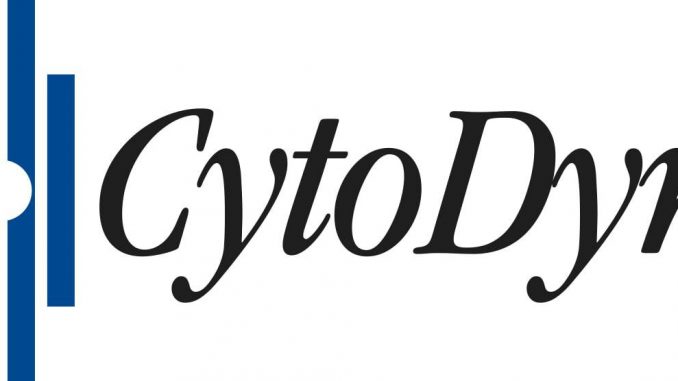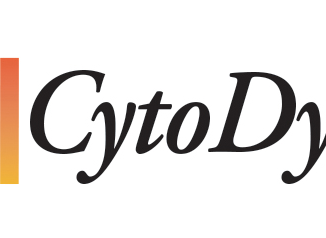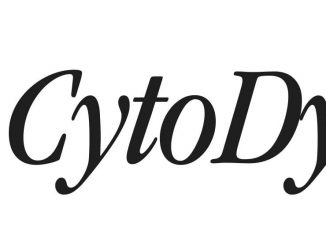
VANCOUVER, Washington, Apr 13, 2020 — More than 25 EINDs approved by FDA for leronlimab use in COVID-19 patients
Phase 2 trial – As of last week, 12 patients enrolled from 2 sites; 3 more sites to initiate enrollment this week, for a total of 5 sites
Phase 2b/3 trial – First hospital cleared to enroll patients beginning today
CytoDyn Inc. (OTC.QB: CYDY), (“CytoDyn” or the “Company”), a late-stage biotechnology company developing leronlimab (PRO 140), a CCR5 antagonist with the potential for multiple therapeutic indications, announced today a comprehensive update and overview of the therapeutic indications from over 30 COVID-19 patients recently treated with leronlimab in over 4 hospitals and clinics throughout the country. More than 25 hospitals, to date, have requested participation in the Company’s trials.
Patient enrollment in the Company’s two clinical trials and Emergency Investigational New Drug (EIND) is as follows:
— More than 25 patients have been administered leronlimab under EINDs authorized by the U.S. Food and Drug Administration (FDA).
— Rate of response in mild-to-moderate patients under EIND has been very promising with the first five patients treated being removed from oxygen.
— As of last week, 12 patients have been treated in the Phase 2 trial for mild-to-moderate COVID-19 indications and, because it is a double-blinded, placebo-controlled trial, results are not yet available.
— First site cleared to enroll patients in Phase 2b/3 beginning today.
Nader Pourhassan, Ph.D., President and Chief Executive Officer of CytoDyn said, “We continue to coordinate around the clock with healthcare professionals across the country to deliver leronlimab to patients and we are in regular contact with the FDA to ensure they receive current patient data. We are planning to rapidly enroll 75 patients and report the results to the FDA as quickly as possible.”
About Coronavirus Disease 2019
SARS-CoV-2 was identified as the cause of an outbreak of respiratory illness first detected in Wuhan, China. The origin of SARS-CoV-2 causing the COVID-19 disease is uncertain, and the virus is highly contagious. COVID-19 typically transmits person to person through respiratory droplets, commonly resulting from coughing, sneezing, and close personal contact. Coronaviruses are a large family of viruses, some causing illness in people and others that circulate among animals. For confirmed COVID-19 infections, symptoms have included fever, cough, and shortness of breath. The symptoms of COVID-19 may appear in as few as two days or as long as 14 days after exposure. Clinical manifestations in patients have ranged from non-existent to severe and fatal. At this time, there are minimal treatment options for COVID-19.
About Leronlimab (PRO 140)
The FDA has granted a “Fast Track” designation to CytoDyn for two potential indications of leronlimab for deadly diseases. The first as a combination therapy with HAART for HIV-infected patients and the second is for metastatic triple-negative breast cancer. Leronlimab is an investigational humanized IgG4 mAb that blocks CCR5, a cellular receptor that is important in HIV infection, tumor metastases, and other diseases, including NASH. Leronlimab has completed nine clinical trials in over 800 people, including meeting its primary endpoints in a pivotal Phase 3 trial (leronlimab in combination with standard antiretroviral therapies in HIV-infected treatment-experienced patients).
In the setting of HIV/AIDS, leronlimab is a viral-entry inhibitor; it masks CCR5, thus protecting healthy T cells from viral infection by blocking the predominant HIV (R5) subtype from entering those cells. Leronlimab has been the subject of nine clinical trials, each of which demonstrated that leronlimab could significantly reduce or control HIV viral load in humans. The leronlimab antibody appears to be a powerful antiviral agent leading to potentially fewer side effects and less frequent dosing requirements compared with daily drug therapies currently in use.
In the setting of cancer, research has shown that CCR5 may play a role in tumor invasion, metastases, and tumor microenvironment control. Increased CCR5 expression is an indicator of disease status in several cancers. Published studies have shown that blocking CCR5 can reduce tumor metastases in laboratory and animal models of aggressive breast and prostate cancer. Leronlimab reduced human breast cancer metastasis by more than 98% in a murine xenograft model. CytoDyn is, therefore, conducting a Phase 1b/2 human clinical trial in metastatic triple-negative breast cancer and was granted Fast Track designation in May 2019.
The CCR5 receptor appears to play a central role in modulating immune cell trafficking to sites of inflammation. It may be crucial in the development of acute graft-versus-host disease (GvHD) and other inflammatory conditions. Clinical studies by others further support the concept that blocking CCR5 using a chemical inhibitor can reduce the clinical impact of acute GvHD without significantly affecting the engraftment of transplanted bone marrow stem cells. CytoDyn is currently conducting a Phase 2 clinical study with leronlimab to support further the concept that the CCR5 receptor on engrafted cells is critical for the development of acute GvHD, blocking the CCR5 receptor from recognizing specific immune signaling molecules is a viable approach to mitigating acute GvHD. The FDA has granted “orphan drug” designation to leronlimab for the prevention of GvHD.
About CytoDyn
CytoDyn is a late-stage biotechnology company developing innovative treatments for multiple therapeutic indications based on leronlimab, a novel humanized monoclonal antibody targeting the CCR5 receptor. CCR5 appears to play a critical role in the ability of HIV to enter and infect healthy T-cells. The CCR5 receptor also appears to be implicated in tumor metastasis and immune-mediated illnesses, such as GvHD and NASH. CytoDyn has successfully completed a Phase 3 pivotal trial with leronlimab in combination with standard antiretroviral therapies in HIV-infected treatment-experienced patients. CytoDyn plans to seek FDA approval for leronlimab in combination therapy and plans to complete the filing of a Biologics License Application (BLA) in April of 2020 for that indication. CytoDyn is also conducting a Phase 3 investigative trial with leronlimab as a once-weekly monotherapy for HIV-infected patients. CytoDyn plans to initiate a registration-directed study of leronlimab monotherapy indication. If successful, it could support a label extension. Clinical results to date from multiple trials have shown that leronlimab can significantly reduce viral burden in people infected with HIV with no reported drug-related serious adverse events (SAEs). Moreover, a Phase 2b clinical trial demonstrated that leronlimab monotherapy can prevent viral escape in HIV-infected patients; some patients on leronlimab monotherapy have remained virally suppressed for more than five years. CytoDyn is also conducting a Phase 2 trial to evaluate leronlimab for the prevention of GvHD and a Phase 1b/2 clinical trial with leronlimab in metastatic triple-negative breast cancer. More information is at www.cytodyn.com.
Forward-Looking Statements
This press release contains certain forward-looking statements that involve risks, uncertainties and assumptions that are difficult to predict. Words and expressions reflecting optimism, satisfaction or disappointment with current prospects, as well as words such as “believes,” “hopes,” “intends,” “estimates,” “expects,” “projects,” “plans,” “anticipates” and variations thereof, or the use of future tense, identify forward-looking statements, but their absence does not mean that a statement is not forward-looking. The Company’s forward-looking statements are not guarantees of performance, and actual results could vary materially from those contained in or expressed by such statements due to risks and uncertainties including: (i) the sufficiency of the Company’s cash position, (ii) the Company’s ability to raise additional capital to fund its operations, (iii) the Company’s ability to meet its debt obligations, if any, (iv) the Company’s ability to enter into partnership or licensing arrangements with third parties, (v) the Company’s ability to identify patients to enroll in its clinical trials in a timely fashion, (vi) the Company’s ability to achieve approval of a marketable product, (vii) the design, implementation and conduct of the Company’s clinical trials, (viii) the results of the Company’s clinical trials, including the possibility of unfavorable clinical trial results, (ix) the market for, and marketability of, any product that is approved, (x) the existence or development of vaccines, drugs, or other treatments that are viewed by medical professionals or patients as superior to the Company’s products, (xi) regulatory initiatives, compliance with governmental regulations and the regulatory approval process, (xii) general economic and business conditions, (xiii) changes in foreign, political, and social conditions, and (xiv) various other matters, many of which are beyond the Company’s control. The Company urges investors to consider specifically the various risk factors identified in its most recent Form 10-K, and any risk factors or cautionary statements included in any subsequent Form 10-Q or Form 8-K, filed with the Securities and Exchange Commission. Except as required by law, the Company does not undertake any responsibility to update any forward-looking statements to take into account events or circumstances that occur after the date of this press release.


